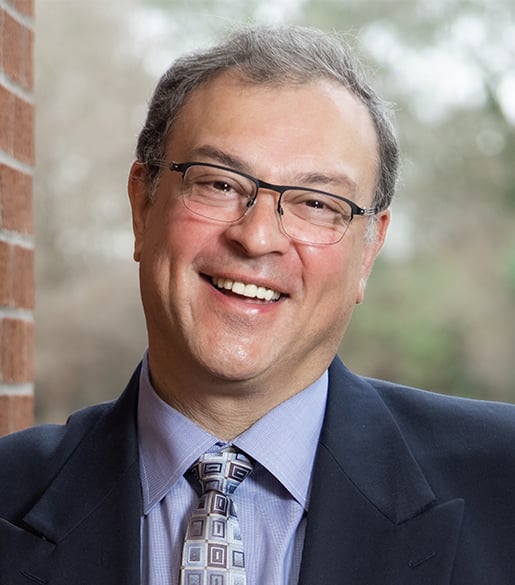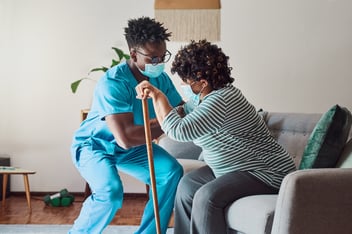An Important Message to Clinicians for Physician Suicide Awareness Day

Curi’s Dr. Damian McHugh joins other healthcare advocates in saying enough is enough when it comes to today’s rates of physician suicide. He encourages clinicians to be vulnerable, share in safe spaces, and link arms together.
If you’re a neurologist, you tend to the brain. Cardiologist, you lovingly take care of the heart. Nephrologist, you encourage us not to “forget the beans.” Family physician, internist, or pediatrician, you touch on it all. But as medical professionals you have one deeply unfortunate thing in common: the threat of suicide when the cost of caring becomes too much.
As a former ER doctor, I know how hard it can be. I’ve seen, heard, and smelled things that stay with me—that wake me up in a sweat at night years later.
This National Physician Suicide Awareness Day, we pause to consider physician suicide and its grotesque toll:
- Female physicians are at a higher risk of suicide than the general population, while both sexes experience suicidal ideation at higher rates than workers in other fields.1,2
- One prepandemic study found that one in 15 U.S. physicians had thoughts of taking their own life over the course of a year.2
- In a BMJ systematic review and meta-analysis, female physicians were estimated to face a 76% elevated risk of suicide.3
Enough is enough.
How Did We Get Here?
In our late 20s and early 30s, we lightworkers simply wanted to save lives, alleviate pain, and interweave our training with our innate compassion to heal those that ailed. Medical school prepared us for the academics, but not so much for the emotions.
We started off strong, proud, and resilient—as well as wicked smart. But within just a few years of walking into cadaver lab, statistics show physicians become plagued by anxiety (24%), depression (33%), mental illness, addiction, fear, and uncertainty, along with PTSD (10%).4 In the last 15 years, harmful or risky drinking in the population has skyrocketed, now affecting roughly 27% of physicians.5
When we work in systems that are overloaded and oversubscribed—with multiple misaligned goals and finances, and with an ever-present specter of profit over patients—burnout rapidly comes calling.
Wendy Dean prefers the term “moral injury”: not being able to do what you know should be done for the soul beside you, because of an insurance payer constraint or hospital policy or a rogue pharmacy benefit manager. Throw in an electronic health record system (EHR) that was sold to you as a Mercedes but at best is a Ford Pinto, and it starts to make sense.
Unfortunately, the most mindful doctors who soulfully seek connection and trust with their patients, for mutual benefit, are the ones seared most critically by the burnout flame.
What Can We Do About It?
As physicians, we have mistakenly held in the past that pervasive feeling that we must be superheroes, shrouded in our capes. But when perfectionistic traits combine with an elevated sense of ownership and duty, cracks form over time and become glaring, unsafe fractures.
Yes, we can fix it for our patients—we know the right course—but we don’t always do what we need to do for ourselves. Despite the proven effectiveness of mental health treatment, most afflicted physicians don’t seek help due largely to fear and shame.
This needs to change.
That’s why I’m thankful for the people and organizations fighting against the stigma:
- There’s my dear friend Betsy Gall-Moody, who courageously writes about this difficult topic in The Illusion of the Perfect Profession.
- Dr. Lorna Breen Heroes’ Foundation founders Corey and Jennifer Feist said, “no more,” and turned the pain of losing their physician loved one into others’ gains. Through the foundation, they spread an empowering message to healthcare providers far and wide: You can do it; we will help.
- JAMA just released a timely and much-needed special communication that I highly recommend: Reducing Barriers to Mental Health for Physicians.
- Curi encourages me to take my seat on the North Carolina Clinician and Physician Retention and Well-Being Consortium (NCCPRW), a body of willing soldiers who go into battle daily for the 40,000 or so licensees of the NCMB here in Curi’s home State. NCCPRW also supports the nurses and other teammates who support our doctors and midlevel providers.
I encourage you not to stay still or silent, to seek out these individuals and groups and their resources so that we can see a meaningful reduction in physician suicide.
My Suggested Takeaways: Share, Seek Help & Band Together
Regretfully, since yesterday, another doctor took their own life. If we are to shrink this weekly carnage, we must be vulnerable and share in safe spaces. We have to link arms together and say no more. Failing to do so might ensure suicide rates rise and that the AAMC’s 2018 prediction of a doctor shortfall of up to 139,000 providers by 2033 becomes a true prophecy.
Talk with a good coach, a therapist, or a psychiatrist. Mental health is health. Tell them, “Hey, this job is hard and our system is broken, just like the lives entrusted to me. Please help me get stronger.”
Undoubtedly, we are stronger together. Band together with your state medical societies and become an active member. Virginia leads the charge, followed rapidly by North Carolina, Nevada, Wisconsin, and Oregon. Explore the resources on their websites, find a friend, support a colleague with a coffee and a much-needed hug, take a deep breath, and see the next patient.
Thank you for all you do. At Curi, we walk beside you.
Curi Resources:
Want strategies on taming the flames of burnout? Join me for a live fireside chat with Dr. Clark Gaither, CMO of the North Carolina Professionals Health Program, on September 23 at 11:45 am ET. The first 50 registrants will receive a free copy of his book Reignite: Transform from Burned Out to On Fire and Find New Meaning in Your Career and Life. Can’t make it at that time? A recording will be made available.
Read more from Curi experts on burnout and physician well-being.
References:
- Sussell, A., et al. (2023, December 15). Suicide Rates by Industry and Occupation — National Vital Statistics System, United States, 202. Morbidity and Mortality Weekly Report (MMWR), CDC. https://www.cdc.gov/mmwr/volumes/72/wr/mm7250a2.htm
- Shanafelt, Tait, et al. (2021). Suicidal Ideation and Attitudes Regarding Help Seeking in US Physicians Relative to the US Working Population. Mayo Clinic Proceedings, 96(8), 2067-2080. https://doi.org/10.1016/j.mayocp.2021.01.033
- Zimmerman, Claudia, et al. (2024). Suicide Rates Among Physicians Compared with the General Population in Studies from 20 Countries. BMJ, 386. https://doi.org/10.1136/bmj-2023-078964
- Saddawi-Konefka D., Moutier C.Y., Ehrenfeld J.M. (2025). Reducing Barriers to Mental Health Care for Physicians: An Overview and Strategic Recommendations. JAMA. https://doi.org/10.1001/jama.2025.12587
- Wilson J., et al. (2022). Characterization of Problematic Alcohol Use Among Physicians: A Systematic Review. JAMA Network Open, 5(12):e2244679. https://doi.org/10.1001/jamanetworkopen.2022.44679
SHARE THIS POST
About the Author


.png?width=1200&length=1200&name=Burnout%20Event%20(1).png)







Comments